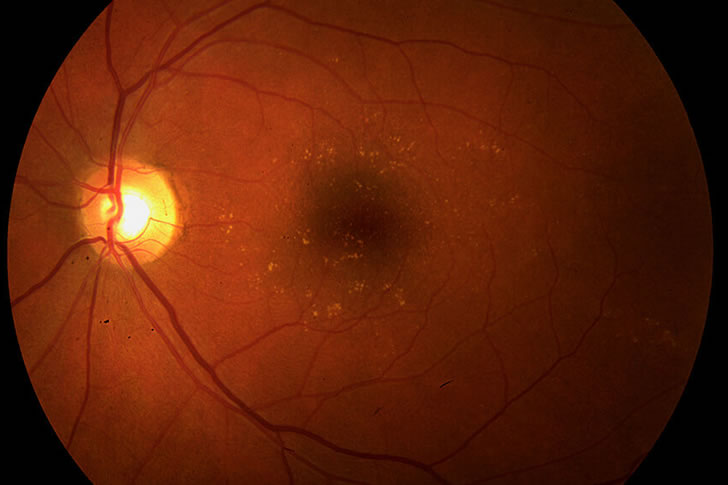Early Signs & Symptoms Of Macular Degeneration Seniors Should Look Out For
6Macular degeneration, often referred to as age-related macular degeneration (AMD), is a prominent eye condition that causes loss of central vision, primarily affecting people in their senior years. We’ve carried out detailed research, and might help you understand the early signals of macular degeneration.

What is Macular Degeneration?
Macular degeneration is a deterioration of the macula, the small central area of the retina that is responsible for sharp, detailed vision. The condition is principally characterized by two types: dry (atrophic) and wet (neovascular) AMD. Dry AMD is more common, accounting for 80-90% of cases, and progresses slowly as the light-sensitive cells in the macula thin over time. Wet AMD, although less common, is more severe and occurs when new, abnormal blood vessels grow under the retina, leaking fluid and blood which can lead to rapid vision loss.
Risk Factors and Prevention
Several factors elevate the risk of developing AMD. Age is the most significant risk factor; the disease predominantly affects those aged 65 and over. Other risk factors include genetics, smoking, high blood pressure, obesity, and a diet lacking in fruits and vegetables.
Preventing AMD involves addressing these risk factors where possible. Regular exercise, maintaining normal blood pressure and cholesterol levels, quitting smoking, and adhering to a diet rich in green leafy vegetables and fish can help reduce the risk.
Early Signs and Symptoms
In its early stages, macular degeneration may be entirely asymptomatic. As the disease progresses, vision may become increasingly blurred, which is often the first noticeable symptom. Other symptoms of macular degeneration that seniors should be aware of:
- Blurred Vision: Difficulty seeing details clearly, both close-up and at a distance, can be one of the first signs of macular degeneration.
- Visual Distortions: Straight lines might appear wavy or bent, which is a typical symptom due to changes in the retina.
- Dark or Empty Areas in Vision: The appearance of dark or blurry spots in the center of one’s field of vision can occur.
- Diminished Color Vision: Colors may appear less vivid or harder to distinguish, as AMD can affect the cells responsible for color perception.
- Difficulty Adapting to Low Light: Challenges in seeing in dim lighting or needing more light for reading and other activities can be an early sign.
- Reduced Central Vision: Central vision is crucial for detailed tasks like reading, driving, and recognizing faces. AMD primarily affects this part of vision.
- Increased Need for Brighter Lighting: Needing brighter light when reading or doing work up close can be an early indication of macular degeneration.
- Difficulty Recognizing Faces: Problems with seeing details in faces can be due to the loss of central vision associated with AMD.
- Visual Hallucinations: In more advanced cases, some individuals might experience Charles Bonnet syndrome, where they see patterns, lights, or even people that aren’t there.
- Change in Vision Over Time: Any noticeable change in vision should be assessed, as AMD progresses gradually.
Regular eye examinations are crucial, particularly for those over 50. Early detection of AMD is essential for effective management of the condition.
Current Treatments and Innovations
While there is no cure for AMD, several treatments can slow its progression or improve vision. Nutritional supplements such as zinc, vitamin C, vitamin E, lutein, and zeaxanthin may help to reduce the risk or slow the progression of dry AMD.
For wet AMD, anti-VEGF (Vascular Endothelial Growth Factor) injection therapy is the standard treatment. These drugs help reduce the number of abnormal blood vessels in the retina or slow leaking from these vessels. Laser therapy and photodynamic therapy are also options, targeting abnormal blood vessels directly.
Ongoing research is focused on various promising areas, including stem cell therapies and new pharmacologic agents that could potentially stop or reverse the processes that cause vision loss in AMD.
Living with AMD
Living with AMD involves adjusting to changes in vision, which might include utilizing low-vision aids and adopting new technologies to make daily tasks easier. Support from vision rehabilitation can help individuals adapt to these changes effectively.
Strong family and community support can also play a vital role in managing the psychological impact of vision loss, helping to keep individuals socially engaged and mentally healthy.
Looking Ahead: The Future of AMD Management
Future approaches to AMD may include more refined gene therapy treatments targeted at modifying specific genetic defects contributing to AMD. Advances in artificial intelligence and telemedicine could also improve diagnosis and management, helping to preserve vision for many individuals.
Overall, understanding macular degeneration is key to managing its impact. With ongoing advancements in medicine and technology, there’s hopeful anticipation for more effective treatments, making AMD a manageable condition with the right care and approach.
References
To validate the information and conclusions in this analysis, here are three credible sources:
https://www.healthline.com/health/what-are-the-early-warning-signs-of-macular-degeneration
https://patient.info/eye-care/visual-problems/age-related-macular-degeneration
https://www.visioncenter.org/conditions/macular-degeneration/







Recent Comments